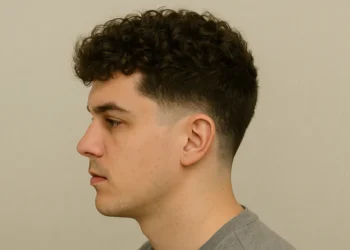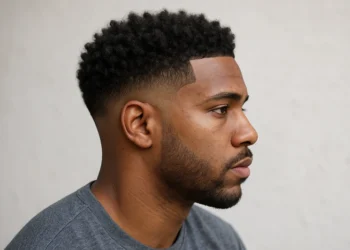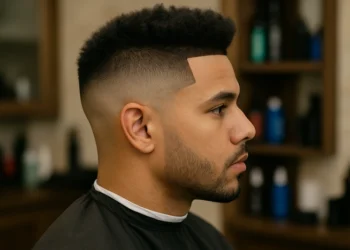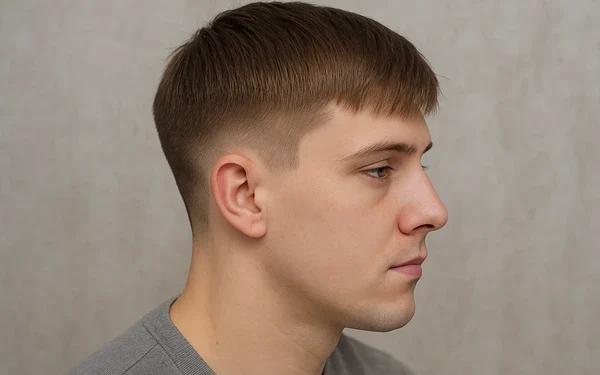The taper fade is more than just a haircut — it’s a timeless style that has evolved into one of the most versatile and in-demand looks for men. At its core, a taper fade is defined by the gradual shortening of hair from the top of the head down to the neckline and sideburns. The fade is what makes the transition seamless, leaving a clean, polished finish that looks sharp from every angle.
From celebrities on the red carpet to athletes on the field, taper fades have become a universal style statement. Whether you prefer a subtle, professional look or a bold, fashion-forward variation, the taper fade adapts to your personality, lifestyle, and hair type. At taperfade.co.uk, our mission is to make this haircut easy to understand, easy to style, and easy to choose — no matter who you are.
The Popularity and Origins of the Taper Fade
The taper fade has roots in classic barbering. It originated as a military-inspired cut in the early 20th century, evolving over time into a cultural staple in barbershops around the world. Its enduring popularity lies in its flexibility: it works on short or long hair, straight or curly textures, and can be paired with countless styles.
Today, the taper fade is considered one of the cleanest haircuts you can get. It’s professional enough for the office, stylish enough for social settings, and practical for everyday life. It’s not just a haircut — it’s an identity.
Types of Taper Fades
When people talk about taper fades, they’re often referring to one of three main variations. Each has its own character and suits different preferences.
Low Taper Fade:
The low taper fade starts just above the ears and around the nape of the neck. It’s the most subtle variation, making it an excellent choice for those who want a neat look without drawing too much attention. Ideal for professionals and students alike, the low taper fade is versatile and works with all hair types.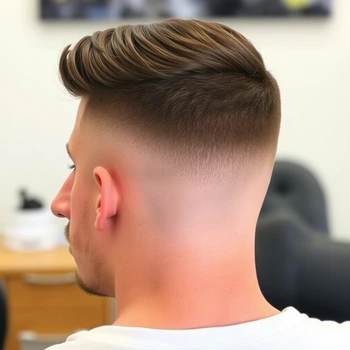
Mid Taper Fade:
The mid taper fade begins higher, usually around the temple area. It strikes a balance between subtle and bold, giving more contrast than the low taper but without the dramatic effect of a high fade. For many, the mid taper fade is the perfect everyday haircut.

High Taper Fade:
The high taper fade starts at or above the temple, creating a sharp contrast between the longer top and the faded sides. It’s bold, stylish, and eye-catching, often chosen by those who want their haircut to stand out. The high taper fade works especially well with textured tops, afros, or modern styling products.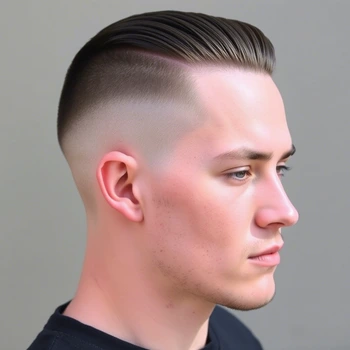
👉 Each of these fades deserves its own spotlight, and you’ll find detailed guides for each type across this website.
Taper Fade by Hair Type
No two heads of hair are alike, and taper fades look different depending on texture. That’s part of what makes this haircut so universal.
- Taper Fade Curly Hair – Enhances natural curls, adding structure and contrast.
- Taper Fade Straight Hair – Sleek and tidy, perfect for a polished finish.
- Taper Fade Wavy Hair – Brings out natural movement while keeping sides sharp.
- Taper Fade Black Male – Works seamlessly with afro-textured hair, whether paired with short waves, twists, or a full top.
Each variation unlocks a different personality. At TaperFade.co.uk, we show you how to style and maintain these looks to suit your lifestyle.
Popular Style Combos
The taper fade’s strength lies in how well it pairs with other styles. Some of the most popular combos include:
- French Crop with Taper Fade – Short fringe in the front, blended sides, and modern appeal.
- Mullet with Taper Fade – A retro style updated for today, with a neat taper for balance.
- Buzz Cut with Taper Fade – Minimal effort, maximum impact; the fade sharpens an otherwise simple cut.
- Fohawk with Taper Fade – Edgy and bold, combining spiky texture with clean sides.
These combos not only modernize the taper fade but also show its adaptability across fashion trends.
Taper Fade vs. Other Haircuts
Many people confuse taper fades with other cuts, so let’s clear up the differences.
- Taper Fade vs. Skin Fade – A taper fade blends gradually without going fully bald on the sides, while a skin fade tapers right down to the skin.
- Shadow Fade vs. Taper Fade – The shadow fade keeps a little stubble for a shadowed effect, whereas the taper fade goes shorter.
- Undercut vs. Taper Fade – An undercut leaves a sharp disconnect between the top and sides; the taper fade is smooth and blended.
These comparisons help you decide which haircut truly matches your style.
Celebrity and Pop Culture Taper Fades
Taper fades aren’t just in barbershops — they’re part of pop culture. From TikTok trends like the Ninja Low Taper Fade Meme to styles worn by footballers, rappers, and actors, the haircut continues to make waves in every generation.
Some notable examples include:
- Luigi Taper Fade – a humorous internet trend.
- Tom Holland French Crop with Taper Fade – stylish, youthful, and movie-ready.
- Athletes – NBA and Premier League players frequently sport variations of the high or low taper fade.
This cultural presence cements the taper fade as more than just a hairstyle; it’s a fashion icon.
How to Style and Maintain a Taper Fade
While taper fades are low-maintenance, keeping them sharp requires a few steps:
- Regular Barber Visits – Every 2–3 weeks to maintain the fade.
- Styling Products – Use pomades, gels, or curl creams depending on your hair type.
- At-Home Care – Brush daily, moisturize hair, and avoid over-washing to keep natural oils intact.
A taper fade grows out neatly, but with the right care, it will always look fresh.
Why Taper Fade Is Your Authority
At taperfade.co.uk, we don’t just write about haircuts — we map the entire semantic world of taper fades. From detailed guides on low, mid, and high tapers to comparisons, style combos, and trend analysis, we’re building a complete content network around this haircut.
By exploring our site, you’ll find:
- In-depth style guides tailored to different hair types.
- Galleries for visual inspiration.
- Honest comparisons to help you pick the right cut.
- Step-by-step advice for maintenance and styling.
Our goal is simple: to help you look your best with the taper fade that suits you most.
Final Thoughts
The taper fade is more than a hairstyle — it’s a statement of confidence, identity, and modern style. By covering every variation, comparison, and trend, taperfade.co.uk stands as the ultimate resource for anyone considering this haircut.
Whether you’re after a professional low taper, a bold high fade, or a trendy combo cut, the taper fade offers something for everyone. Explore our guides, check out our style inspiration, and let your next haircut be a taper fade that turns heads.
FAQs
What is the difference between a taper and a fade?
A taper gradually shortens the hair down to the neckline, while a fade blends the hair completely into the skin. A taper fade combines both techniques.
How long does a taper fade last?
Typically, 2–3 weeks before it needs a touch-up. Hair growth rate and fade height will affect this.
Is a taper fade professional?
Yes — the taper fade is one of the most professional haircuts available, making it suitable for both formal and casual settings.
Which taper fade is best for curly hair?
A low taper fade works well for curly hair, as it enhances volume on top while keeping sides tidy.
Can taper fades work for women?
Absolutely. Many women choose taper fades for short hairstyles, adding a modern edge to their look.
